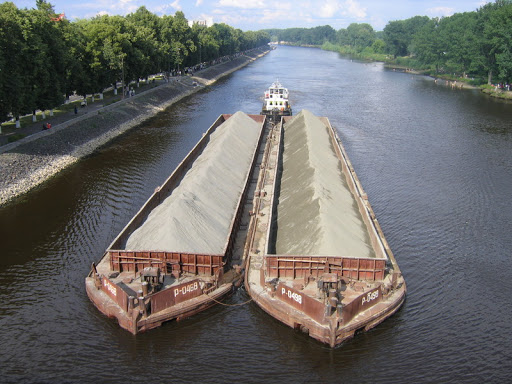Plans for Waterway From Baltic to Black Sea via Ukraine, Belarus and Poland Advance
Publication: Eurasia Daily Monitor Volume: 17 Issue: 21

During the Middle Ages, the waterways linking the Baltic and the Black seas were a far more important trade corridor than any land routes linking Europe with what was to become Russia. Twenty years ago, following the collapse of the Soviet Union, the European Union called for developing this older route to handle modern barge traffic via Ukraine, Belarus and Poland. Those plans were celebrated in stamps jointly issued by Ukraine and Estonia in 2003; but to date, relatively little progress has followed. Now, these plans finally appear to be taking off, which could dramatically change the economies of Belarus and Ukraine, linking them more closely with Europe and thus giving them a greater chance to escape from under Russian dominance.
The EU christened the revived Ukraine–Belarus–Poland water route the “E40 Project” and designated it part of its Eastern Partnership program. Once completed, it would extend 2,000 kilometers via the Dnepr and Pripat rivers, the Dnepr–But canal, further along the western Bug to the Vistula, and northward to Polish ports on the Baltic. Once completed, this corridor could carry five to seven million tons of goods westward each year, not only bypassing Russia but cementing Belarus and Ukraine more firmly into the West. Indeed, both when it was originally pushed in the early 2000s and now, it appears this riverine transit route’s geopolitical impact has been viewed by all parties as of even greater importance than its geo-economic one.
Russian opposition, economic uncertainties, and questions about Belarus’s political orientation had kept the project from making much progress until last fall, when Minsk appeared to make a choice to turn away from Russia. Since then, the project has attracted new attention and made real progress. In September 2019, the transportation ministers of Ukraine and Belarus met and agreed on what needed to be done. A month later, Belarus signed a contract with Beltonenergo for the construction of a port on the Dnepr and the development of associated waterways. In December, Ukrainian and Belarusian officials signed a broader agreement about the E40 project. And at that time, they, along with Poland, began to search for the $20 billion in investments that will be needed to complete the entire route (TASS, September 14, 2019).
While that sum and the technical problems of building canals in Belarus remain daunting, enough progress has been made in the past four months that last week (February 13), Russian analyst Aleksey Chichkin admitted the program was now going forward. He nonetheless suggested there were serious obstacles ahead given that some in Ukraine and the EU remain skeptical about Minsk’s ultimate orientation and are hesitant to put money into a project until Belarus’s crucial participation can be guaranteed (Ritmeurasia.org, February 13, 2020).
The E40 will involve linking together currently navigable rivers and canals by mostly deepening existing waterways and building some new ones. The largest part of this must still be done on Belarusian territory. Many are enthusiastic about the possibilities such a water route will play in a region of some 100 million people. But others worry about an issue likely to be raised forcefully in the future, especially by opponents of the plan in the Russian Federation. Namely, because of the 1986 Chernobyl accident, many of the areas along the planned route were and remain contaminated by nuclear fallout. The new waterways could have the effect of spreading this contamination to a larger area. That appears to be a particular concern in Poland, which so far has shown little interest in developing its own shipping industry to take advantage of the E40 (Khersonline.net, February 17; iPress.ua, February 13).
The Ukrainian government recently declared that it expects a breakthrough on financing of the E40 at a meeting with the Poles, Belarusians, EU officials and German bankers later this spring. Moreover, Kyiv said it now has assurances that the Belarusian government is committed and believes that, with such commitment, the project will attract European support and go forward (Liga.net, February 13). And while many observers remain skeptical about the E40, some Ukrainian ones are in a celebratory mood: Yaroslav Pilispchuk of the Ukrainian Institute of the Future argues that with this project’s completion, Ukraine will have in place the ability to be a major link between Scandinavia and India (UBR, February 12).
But perhaps the clearest sign of progress is that Ukraine’s Ministry of Infrastructure just announced it is shifting some of its funds away from highway construction—something that will not be popular with many Ukrainians—to river and canal development so that the country will be ready to play its part in the E40 (Segodnya.ua, February 11).
What must be remembered is that for Ukraine and Poland, the parts of this project on their territories will play a major role in economic development, while for Belarus, the entire project will have to be completed to have any effect. Thus, the first two countries will see benefits within the coming months while Belarus may not for several years. That difference could prevent the entire project from succeeding; but it is also why Minsk is clearly encouraged by what is happening in Ukraine and thus is likely to push forward to restore a waterway that played such a key role in medieval Europe and could do so again in the 21st century.

